Sơ lược lịch sử của tín dụng và định nghĩa của nó
Bạn đang xem bản rút gọn của tài liệu. Xem và tải ngay bản đầy đủ của tài liệu tại đây (95.19 KB, 38 trang )
BRIEF HISTORY OF CREDIT AND ITS DEFINITION
Barter- is the exchange of goods or services to
another goods or services.
-
It increases the productivity of tribal units
particularly due to specialization.
Money- serves as a medium of exchange.
According to Adam Smith, money
originated in man’s rational effort to meet the
necessity of finding some medium of exchange.
Money is responsible for increasing the
production and thus adds to the creation of
wealth and also in accelerating consumption with
the concomitant rise in the standard of living of
the people.
One of the unique features of our
business system is that it operates to a large
extent on promises called credit.
Credit comes from the latin word
“credere” which means to trust. Credit is akin
to a two way street. In banking, credit is held
to refer to “ an entry in the books of the bank
showing its obligation to a customer” that is
for the deposits made by the latter.
In bookkeeping, credit is “ an entry
showing that the person named has the right
to demand some thing but not necessarily
money”.
In commerce, credit pertains to “an
exchange transaction”.
Credit is the ability to obtain a thing of
value in exchange for a promise to pay definite
sum of money on demand or future
determinable time.
Credit is defined as a transaction
involving the transfer of goods, services, funds,
property or rights, thereby creating an
obligation on the part of those who receive
them, that must be complied with in the
future.
Items Examples
2.Goods Groceries, Appliances,medicines,etc
3.Services Car repair, beauty parlor and the like
4.Funds Cash loan from pawnshop, bank or
friend
5.Property Hammer for temporary use by a
neighbor
6.Rights Possession or use of a commercial
store space bonds, stocks etc.
Note:
Not all of these 5 types of transactions would necessarily result in the creation of credit.
Reasons for Concern. When a transaction is
consummated and all parties are satisfied, there is no
reason to be concerned. But since a transaction could
turn sour, or pose a problem, or even create a legal
dispute, such as when:
1.Goods delivered are spoiled or substandard.
2.Services provided such as car repair are
inadequate or technically defective.
3.When the prices, for either goods or services,
were not clearly understood by both parties.
Note: It would be best to avoid problems by handling transactions properly, from the beginning,
with the use of appropriate documents, free from defects. “An ounce of prevention is better than a
pound of cure”.
CHARACTERISTICS OF CREDIT
1.It is a bi-partie contract.
2.Presence of trust or faith.
3.It involves futurity.
4.It is elastic
FOUNDATIONS OF CREDIT
1. Confidence
2. Proper Facilities
3.Stability of Monetary Standard
4.Government Assistance
5.Credit Risk
ELEMENTS OF CREDIT
1. Ability to obtain a thing of value.
2. A promise to pay.
3. Definite sum of money.
4. Payable on demand or future time.
ADVANTAGES OF CREDIT
2.Credit facilitates and contributes to the increase
in wealth by making funds available for productive
purposes.
3.Credit saves time and expense by providing a
safer and more convenient means of completing
transactions.
4.Credit helps expand the purchasing power of
every member of the business community.
5.Credit enables immediate consumption of goods
thereby providing for an increase in material well-
being.
6.Credit helps expand economic opportunities
through education, job training and job creation.
6. Credit spreads progress to various sectors of the
economy.
7. Credit makes possible the birth of new industries.
8. Credit helps buying become more convenient for
customers.
DISADVANTAGES OF CREDIT
5.Credit, at times, encourages speculation.
6.Credit also tends to contribute to extravagance and
carelessness on the part of the people who obtain it.
7.Because of credit, many entrepreneurs resort to
over-expansion.
8.Business can be expanded or contracted rapidly
through the use of credit
Calculating the True Costs of Credit
There are two common and distinct types of
credit: Credit for merchandise sold, and Cash or
Bank Loans. The most common term for
merchandise credit is 2/10 N 30.
Credit Period – the number of days until full
payment is required.
Cash Discount – A percentage deducted from the
purchase price if the buyer pays within the
specified time shorter than the credit period.
Cash Discount Period – The number of days after
the beginning of the credit period during which
the cash discount is available.
CLASSIFICATION AND SOURCES OF CREDIT
There are equally important purposes in the
classification of credit, first, as a quick guide to those
who need them, as to where and how to get them,
and second, to guide those who provide them as to
where to find these users of funds.
Credit is generally classified according to
purpose for where the loan funds are intended to be
used:
5.Agricultural Credit.
a. Time Loan
b. Crop Loan
c. Commodity Loans
2. Commercial Credit
3. Industrial Credit
4. Consumer Credit
5. Commodity Loans
Kinds of Consumer Credit
f.Charge Account
Advantages of Charge Account
8.It is a very convenient way of shopping.
9.It eliminates the inconvenience as well as the danger of
carrying too much money.
10.Charge account enable customers to buy goods only at
the time they want them.
11.Charge account enables consumers to obtain goods
even before they have the money.
12.Charge account provide a valuable means of reference
in many business transactions.
a. Installment Credit
Precautions in Buying on Installment
3. Never allow yourself to be rushed or
pressured into signing a contract until you
became conversant with all the facts.
4. Always insist for an extra copy of the
contract.
5. Never sign any contract before all the blank
spaces are filled in.
7. Read very carefully what you sign.
8. Read again after signing.
SOURCES OF CREDIT
•
Financial Institutions- the biggest sources of credit.
•
Financing Companies – primarily organized for the purpose of
extending credit facilities to consumers and to industrial,
commercial, or agricultural enterprises either by discounting or
factoring commercial papers or accounts receivables, buying or
selling contracts, leases, chattel mortgages and other movable
property.
Credit can also be classified according to maturity.
2.Short-term
3.Medium Term
4.Long-Term
Loans are also either secured or unsecured. Security
refers to a real or personal property used as collateral, usually
required by the lender.
Unsecured Loans are also called as character or clean
loans
3. Non-financial Intermediaries
a. Appliance companies/Car Dealers
b. Pawnshops
c. Lending Investors
d. Employers
e. Department Stores
f. Individual Money Lenders
DOCUMENTS IN CREDIT TRANSACTIONS
B.Documents for Credit Evaluation
Document that are used in credit transactions
could be classified into 2 major types:
1. those used for credit evaluation to eventually
approve or disapprove an applicant.
2. those used to document an approved credit
transaction.
Documents Required for Credit Evaluation
Initials Used:
ITR-Income Tax Returns
B/S – Bank Statements
BOD – Board of Directors


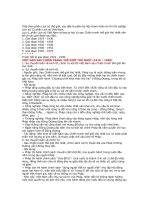
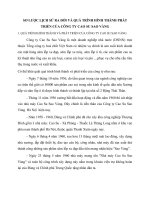

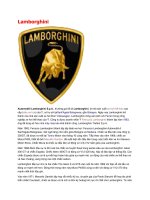
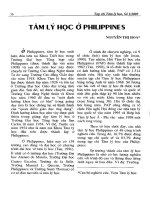
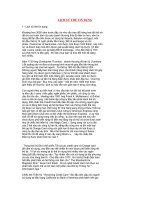
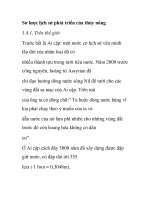
![Tư tưởng trị nước thời Lê Sơ và ý nghĩa lịch sử của nó [full]](https://media.store123doc.com/images/document/2015_07/17/medium_tux1437124872.jpg)